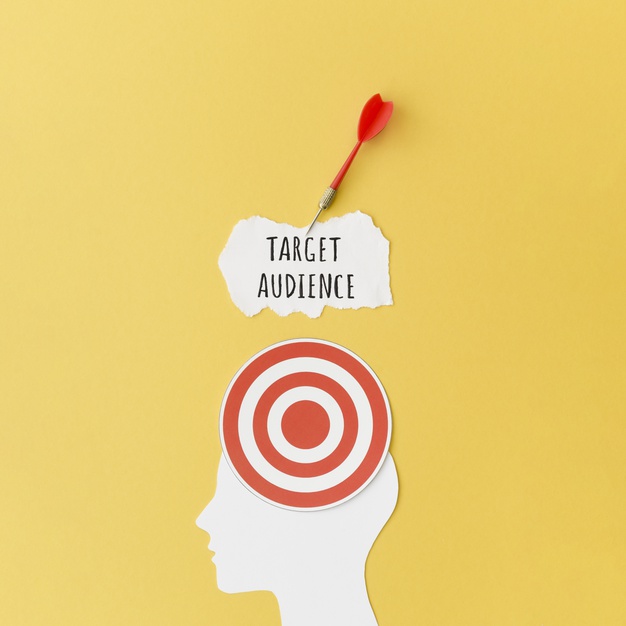The ability to come up with original and creative content is one of the challenges content creators encounter.
What are the red flags content marketers need to avoid in today’s cascading marketing landscape? Creators are saddled with the responsibility of finding ingenious ways of attracting new customers and retaining old ones.
Amidst this hunt for creative content, below are 6 major red flags every content creator should be on the look out for.
Red flag #1: No proper content audit

Content audit is the process of analysing all the content on your paid, earned, shared and owned media; in order to identify resources you currently have, reveal your content marketing strength and weaknesses or to assess your future marketing activities.
Content audit shouldn’t be limited to website or blog content. Share on XConducting a proper content audit is vital in every content creation process, and some content marketers fail to go through this process.
Not conducting a proper content audit is a red flag every content creator should avoid in today’s cascading marketing landscape.
Read also: Eliminating the Gate Agent Problem: Tactics To Win Clients’ Trust
Some of the benefits of content audit includes:
- It helps you identify content to improve
- It provides long-term vision and short-term motivation
- Content audit helps you organise your time and resources
Red flag #2: No clearly defined goal for content creation

Why are you creating infographics instead of a cheatsheet? What stage of the customer journey are you targeting with your content? What does your brand aim to accomplish with each blog post?
However entertaining or educational your content might be, it won’t make much impact to your business or generate an impressive return on investment if it isn’t tied to a company goal.
Every piece of content you create should be tied to the overall goal of your organisation.
Without a well-defined goal and strategy, your content won’t bring in the desired outcome.
At the heart of setting content goals is creating a solid content strategy. This will align, transform and give life to your business goals.
By strategically, defining goals for each content you create, you’ll be setting your business up for success rather than blindly creating content and hoping it sticks.
Red flag #3: Publishing content without regards to SEO

I won’t go into details on the strategies behind Search Engine Optimization.
“If you’re going to post content on your site anyway, you might as well make sure Google takes notice of your effort” – The Content Factory
The Google Search Engine Results Pages (SERP) is a race of quality keywords, and only those who have successfully mastered the art of matching their business offerings to the need of their target audience will show up on Google.
Read also: Four Marketing Lessons From The Big Brother Nigeria
SEO should form a big part of your content creation process.
What words or phrases are your target audience searching for? With this in mind, you can create tailored content to help solve their needs.
SEO is to website what hashtag is to social networks.
The same way you target your audience on social networks using hashtags, SEO can be likened to this structure.
In this scenario, you’re targeting those who have indicated interest in your content or searched for something similar.
Red flag #4: Your content is solely focused on selling your product

So, I get the point that you want to sell your product and service, and the only way to do this is putting the word out there about your product.
There’s no crime in that, however, this is one red flag to avoid in content creation.
Using promotional content over a long period of time can make your content appear as being too salesy.
Your target audience will get tired of your content because they derive little or no benefit from it.
In order to create a well-balanced content strategy, you need to establish a good mix of promotional content with curated content.
Consider applying the 70-20-10 rule or the 80/20 mix.
Only 20% of your content should promote your own brand, the other 80% should be dedicated to content that really truly interests your audience and engages them in conversations.
The bulk of your content should educate your community, however, you can always tweak to your satisfaction.
Similarly, non-promotional content can also help you boost sales. They can help position your brand as being human and helpful.
Red flag #5: Lack of a distinguishable target audience

A target audience is a group of people defined by certain demographics and behaviour who are most likely to be interested in your brand’s product or service.
Identifying your target audience as a brand can help you craft compelling marketing communications tailored towards this defined audience.
In order to create a laser-focused audience, brands invest in creating buyer personas.
Buyer persona is a fictional representation of your ideal customer based on market research and available information about your existing customers.
This persona will be giving a name, demographic details, interest and behaviour you think will be an ideal representation of your target audience.
This allows you to craft content tailored towards these sets of people.
Buyer personas aren’t a one size fits all, so be sure to tweak your persona as many times as your wish.
If your business doesn’t have a buyer persona or a recognizable target audience, then to whom are you creating?
Red flag #6: Copy and paste without reference or citation

The truth is, there’s nothing “new” in the world today. We’re all in the business of “idea recycling”.
However, this doesn’t mean that content marketers can adopt anyone’s copy and use without express permission or citation.
Most of the content out there is open to the public and free for consumption, but there’s a small caveat.
ALWAYS give reference or cite your source whenever you lift words from other authors. This also applies to graphics and other forms of content.
I know we all want to look and sound smart, but it takes absolutely nothing to recognise another creator’s brilliance by referencing them.
Read also: How To Boost Sales Using Non-Promotional Content
These are some of the Red Flags to avoid in content creation. Although the list is almost inexhaustible, content creators need to be aware of these and adjust their methods with time.
Which of these red flags have you found yourself guilty of?


4 thoughts on “6 Red Flags To Avoid In Content Creation”